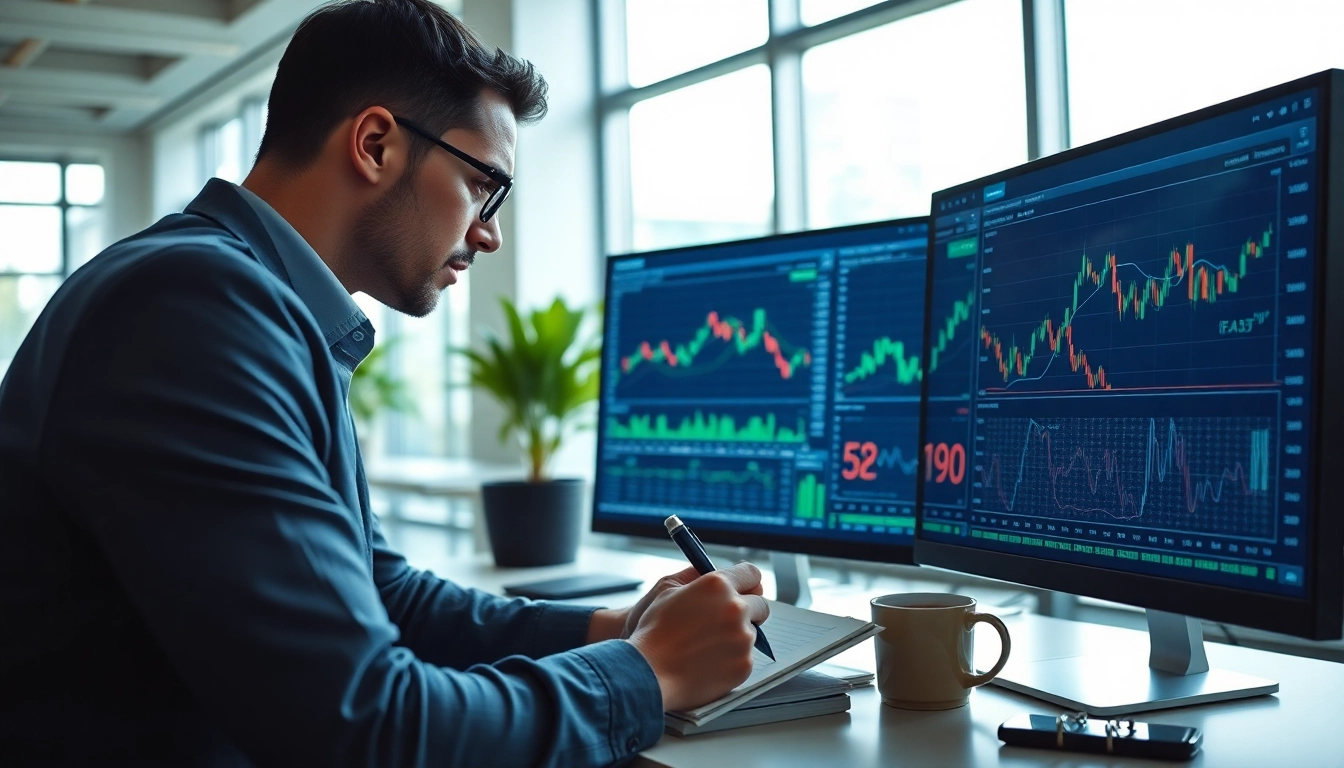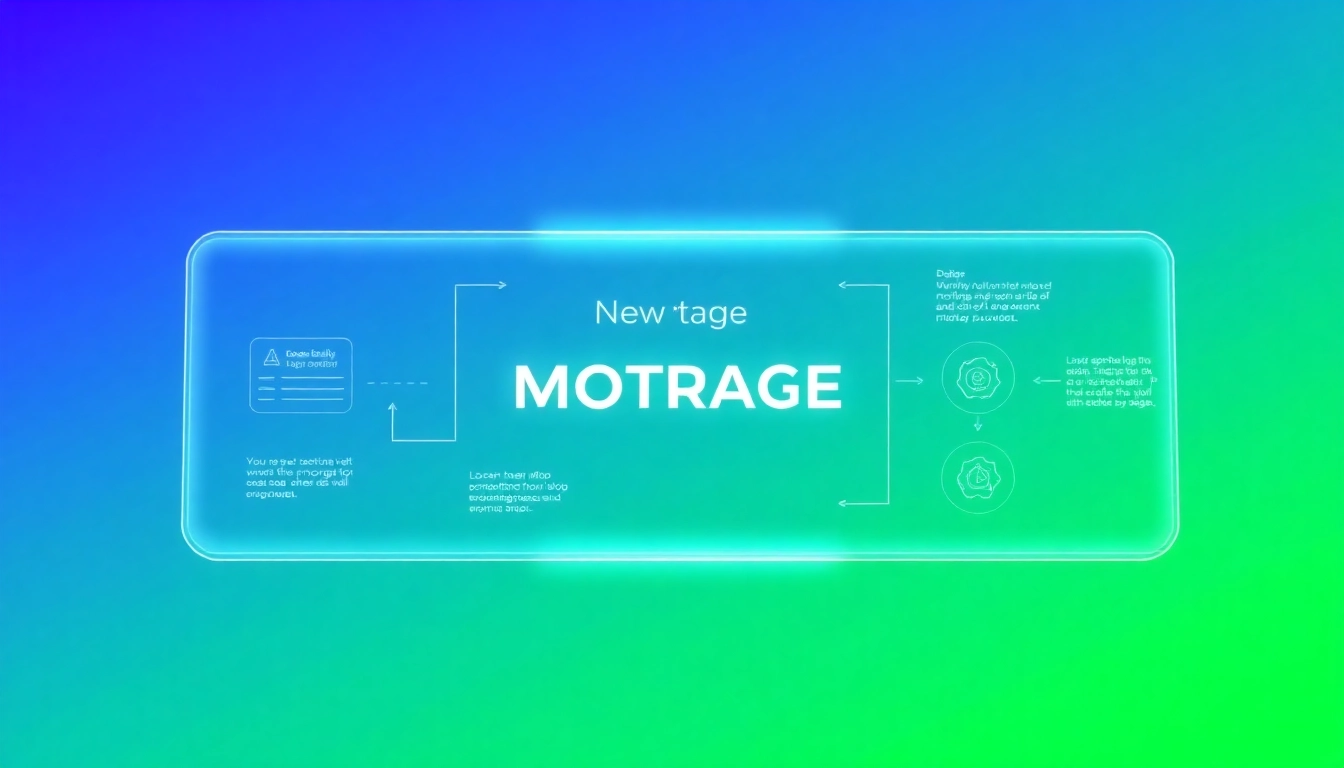Understanding Trade Futures
What Are Trade Futures?
Trade futures are financial contracts that obligate the buyer to purchase, and the seller to sell, a specific quantity of an asset at a predetermined price on a particular date in the future. These contracts are pivotal in the financial markets and play an essential role for traders and investors aiming to mitigate risk or speculate on price movements. In essence, when you engage in trade futures, you are entering an agreement that allows you to lock in prices today for transactions that will occur later, making them an invaluable tool in managing finances amidst market volatility. Futures can be based on a variety of underlying assets, including commodities such as oil and wheat, indices like the S&P 500, or even currencies.
Key Terminology in Trade Futures
The world of trade futures has its own set of jargon that can be overwhelming for newcomers. Understanding these terms is crucial for navigating the futures market effectively:
- Contract Size: This refers to the standard quantity of the underlying asset that each futures contract represents.
- Expiration Date: The date when the contract must be settled, either through physical delivery of the asset or cash settlement.
- Margin: The collateral that must be posted to open and maintain a futures position. It acts as a security for both parties in the agreement.
- Long Position: This is when a trader buys a futures contract, anticipating that the asset’s price will rise.
- Short Position: This occurs when a trader sells a futures contract, anticipating that the asset’s price will decrease.
- Settlement: The process by which gains and losses are calculated and settled either in cash or by delivery of the underlying asset.
- Open Interest: This indicates the total number of outstanding futures contracts that have not been settled.
How Trade Futures Work in Financial Markets
Trade futures function on exchanges where participants can buy and sell these contracts. The process begins with the creation of a futures contract, which is standardized and traded on futures exchanges, such as the Chicago Mercantile Exchange (CME). Traders can enter the market by taking positions—either buying or selling futures contracts.
When a trader takes a long position, they expect that the price of the underlying asset will rise, allowing them to sell at a profit. Conversely, traders short futures contracts, betting that the asset’s price will decrease, leading to a profit by buying back the contract at a lower price. The key to trading futures lies in predicting market movements accurately and managing risk effectively.
Benefits of Trade Futures
Leverage and Risk Management
One of the most appealing aspects of trading futures is the ability to leverage investments. Leverage in futures contracts means that traders can control a large position with a relatively small amount of capital. This is possible due to margin requirements that allow traders to borrow funds to increase their purchasing power. However, while leveraging can magnify gains, it also heightens risk; thus, it necessitates robust risk management strategies to mitigate potential losses.
Diversification Opportunities
Futures contracts offer diversification opportunities that are invaluable for investment portfolios. By incorporating different types of commodities or financial instruments through futures trading, investors can spread their risk. For example, a portfolio containing both agricultural commodity futures and equity index futures can withstand fluctuations in one market by benefiting from stability or gains in another, thus providing a buffer against market volatility.
Hedging Against Market Volatility
Another significant benefit of trading futures is their use in hedging. Businesses and individual investors can hedge against price fluctuations in the underlying assets. For instance, a farmer may use futures contracts to lock in prices for their crops at the time of planting. As harvest time approaches, they can sell their futures contracts to mitigate the risk of falling prices. This strategy ensures price stability and prevents financial loss caused by adverse market movements.
Common Challenges in Trade Futures
Market Fluctuations and Price Risks
Despite the advantages, trading futures is fraught with challenges. One of the most significant issues is the inherent volatility in the markets. Prices can fluctuate dramatically in short periods due to various factors, including economic indicators, geopolitical events, and market sentiment. This volatility can lead to substantial losses for traders who are not adequately prepared or who lack a comprehensive risk management plan.
Emotional Decisions and Their Impact
Traders often face psychological pressures that can lead to impulsive decision-making. Emotional responses to gains or losses can cloud judgment, causing traders to deviate from their plans. The fear of missing out (FOMO) or the desire to recover losses can push traders into making hasty decisions that may not align with their overall strategies. Developing a disciplined mindset and adhering to a planned approach is essential for long-term success in the futures market.
Pitfalls of Over-Leveraging Investments
While leverage can enhance returns, over-leveraging can lead to substantial financial pitfalls. Traders may find themselves in precarious situations where minor movements in the market result in significant losses, potentially wiping out their entire capital. It is critical to use leverage judiciously, setting strict limits on how much capital to use in trades and ensuring that any potential losses are manageable.
Best Practices for Trading Futures
Developing a Robust Trading Plan
A successful futures trading strategy begins with a well-thought-out trading plan. This plan should outline specific goals, define risk management strategies, and detail how trades will be entered and exited. A robust trading plan includes criteria for evaluating trades based on market conditions, including the use of support and resistance levels, technical indicators, and fundamental analysis. Regularly reviewing and adjusting the plan can help traders adapt to changing market dynamics effectively.
Using Technical Analysis Effectively
Technical analysis is a vital skill for futures traders. By analyzing price charts and various technical indicators, traders can identify historical trends and make predictions about future price movements. Common tools include moving averages, Relative Strength Index (RSI), and Fibonacci retracements, among others. Mastering these analytical techniques can provide traders with insights into entry and exit points while enabling them to make informed decisions based on statistical data.
Setting Realistic Goals and Expectations
Establishing realistic goals and expectations is crucial for any trader’s long-term success. Understanding market volatility and the inherent risks of trading futures is necessary for setting achievable profit targets. Traders should recognize that while substantial profits are possible, losses can equally occur. By focusing on gradual, sustainable growth rather than unattainable short-term gains, traders can maintain their motivation and discipline in the tumultuous futures market.
Performance Metrics in Trade Futures
Key Performance Indicators to Track
To measure success in futures trading, traders must track specific performance metrics. Important key performance indicators (KPIs) include:
- Win/Loss Ratio: This metric calculates the ratio of profitable trades to losing trades. A favorable win/loss ratio is crucial for overall profitability.
- Return on Investment (ROI): This figure measures the net profit relative to the capital invested in trading futures.
- Average Trade Duration: Monitoring how long trades are held can provide insights into trading patterns and help improve strategy.
- Maximum Drawdown: This refers to the largest drop from a peak to a trough in a trader’s account balance, indicating the potential risk involved.
Evaluating Trading Strategies
Continuous evaluation of trading strategies is crucial to ensure performance improvement. Traders should regularly review their past trades and analyze what worked and what didn’t. Analyzing both winning and losing trades provides valuable lessons and insights that can inform future decision-making. Additionally, utilizing simulation tools can help in predicting the effectiveness of strategies under various market conditions.
Adjusting Tactics Based on Performance Data
The ability to adjust tactics based on performance data is a hallmark of a successful trader. By utilizing collected data on trading performance, individuals can identify patterns, strengths, and weaknesses in their approaches. For instance, if a trader notices that a specific strategy yields poor outcomes in bearish markets, they might choose to revise or abandon that tactic in favor of more effective methods. Flexibility and adaptability in trading strategies are paramount for achieving long-term success in the futures market.








Leave a Reply